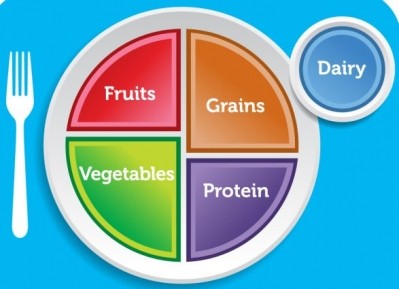USDA releases 2010 Dietary Guidelines for Americans
The Dietary Guidelines are revised every five years in order to reflect changes in nutrition knowledge over time, including a review of contemporary US intakes of various foods and nutrients, examining those areas in which consumption may be inadequate, or where it may be excessive. Although many of the recommendations in the 2010 Dietary Guidelines for Americans are the same as those detailed in the 2005 guidelines, there are some changes, particularly regarding strategies to tackle excess body weight.
Obesity
The 2010 version confronts obesity head-on for the first time, reflecting a US population that is predominantly overweight or obese, and therefore at increased risk for a number of health complications and illnesses.
As a result, industry is likely to find itself under even greater pressure to formulate healthier foods that reflect the updated guidelines.
Agriculture Secretary Tom Vilsack said: "The 2010 Dietary Guidelines are being released at a time when the majority of adults and one in three children is overweight or obese and this is a crisis that we can no longer ignore. These new and improved dietary recommendations give individuals the information to make thoughtful choices of healthier foods in the right portions and to complement those choices with physical activity. The bottom line is that most Americans need to trim our waistlines to reduce the risk of developing diet-related chronic disease.”
Sodium
Following the release of the Dietary Guidelines Advisory Committee’s report in June 2010, it was widely anticipated that the general recommendation for sodium intake would be reduced, but the final guidelines stop short of giving blanket advice.
While two-thirds of Americans are overweight, nearly 70 percent have high blood pressure, or are at increased risk of developing high blood pressure. This has led to a recommended maximum daily intake of 1,500mg of sodium for groups that make up about half of the general population and most adults – specifically, those aged 51 and older, African Americans, and those who have hypertension, type-2 diabetes or chronic kidney disease. The recommendation for other groups remains at 2,300mg. The average daily intake among US adults is about 3,400mg.
Macronutrients
In terms of macronutrient intake – carbohydrates, fat and protein – the report underlines that inadequate protein intake and inadequate total fat intake are generally not areas of concern in the United States, although it does state that most Americans consume too little unsaturated fat and too much saturated fat. In addition, the report said that there is strong evidence for “no optimal proportion of macronutrients that can facilitate weight loss or assist with maintaining weight loss”, and that the critical issue for achieving and maintaining weight loss is caloric intake.
Other recommendations include cutting consumption of solid fats, refined grains, sugars, and sodium, and emphasizing consumption of fruits, vegetables, whole grains, seafood, low-fat and fat-free milk products, lean meat and poultry, eggs, beans and peas, and nuts and seeds.
The USDA added that a ‘next generation’ food pyramid will be released in the coming months.
The full report is available online here.
For more insight on the implications of the 2010 Dietary Guidelines for Americans, look out for FoodNavigator-USA’s special edition articles on the topic over the week ahead.









